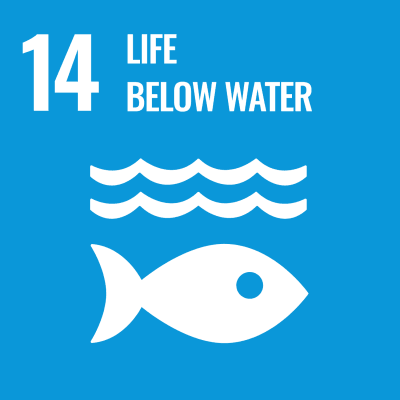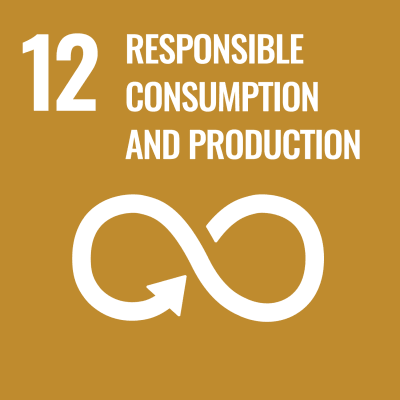-
Faculty of Life Science, Department of Medical Technology
- Professor
- Noriaki MATSUKI
- Research Field
Medical Engineering
- Keyword(s)
Blood Oxygenation, Oxygen Microbubble, Micro Particle, Cancer, Apoptosis
- Research theme
-
- Developing of the oxygen supersaturated infusion solution with micro-nano bubbles.
- Developing of the oxygen supersaturated infusion solution with micro-nano particles.
- Study of mechanism of cancer cell apoptosis.
Outline of research activities
Microbubbles have unique properties, existing stably for a long time, shrinking and disappearance (shrinking collapse) in a liquid to produce a gaseous supersaturated solution, and generation of hydroxyl free radicals. On the other hand, in the medical field, respiration and circulation management is given top priority, and oxygen administration and venous infusion routes are routinely carried out. Therefore, focusing on the property of the microbubble shrinking collapse phenomenon, if we can create an oxygen supersaturated infusion solution which directly oxygenate the blood, we can easily manage respiratory and circulatory conditions at the same time, which can be widely used for general treatment in various situations. Normally, when air bubbles are infused the blood, a thrombus is formed, which is dangerous and causes thromboembolism (infarction of the heart, lungs, brain, etc.). However, fine oxygen microbubbles that can easily pass through the thrombus removal filter (20-40㎛) of the CPB(cardio-pulmonary bypass) will naturally shrink and disappear (shrinking collapse) due to the nature of the microbubbles, so theoretically, thrombus can be eliminated. Therefore, the risk of embolism is small and considered safe. In the past, we have demonstrated that oxygen microbubble solutions with a diameter of 10 µm or less can be produced and the blood can be directly oxygenated. Furthermore, by combining a pressurized nozzle and ultrasonic waves, fine oxygen microbubbles with a diameter of 1.5 µm or less were produced in physiological saline, demonstrating the possibility and usefulness as an infusion solution. As for the application of the oxygen supersaturated infusion solution, it is expected to be used for emergency situations such as cardiopulmonary arrest, hypoxemia (pneumonia, respiratory failure, heart disease etc.), and ischemic diseases (myocardial/cerebral infarction, etc.). In general, chemotherapy and radiation therapy are known to induce cancer cell apoptosis and enhance their antitumor effects when they are placed in a hyper-oxygen state. If the oxygen supersaturated infusion solution are used in combination with anticancer drugs, the dose of anticancer drugs with strong side effects can be expected to be reduced, and the dose of antibiotics for infections (sepsis) can also be expected to be reduced.
- Desired cooperation
-
- Invention of the oxygen supersaturated infusion solution with micro-nano bubbles and particles.
-
Faculty of Life Science, Department of Medical Technology
- Professor
- Seiichi KATAYAMA
- Research Field
Bacteriology, Bacterial Molecular Genetics
- Keyword(s)
Clostridium perfrigens, Regulation of Production of a-toxin, Fibronectin-binding Proteins, Pili
- Research theme
-
- Effect of phased A-tracts sequence on a-toxin production.
- Identification and functional analysiss of Clostridium perfringens fibronectin-binding protein.
- A study of novel pili in Clostridium perfringens.
Outline of research activities
Clostridium perfringens is a bacterium that causes gas gangrene and food poisoning. a-toxin (phospholipase C) is a pathogenic factor in gas gangrene. We showed which amino acids in the C-terminal domain of the αsubunit (αCTD) of RNA polymerase interact with the phased A-tracts DNA upstream of the promoter of a-toxin gene. The autolytic enzyme autolysin of C. perfrignes was identified as one of the fibronectin-binding proteins. In addition, through joint research, we were able to determine the three-dimensional structure of CppA, a pili-constituting protein.

- Desired cooperation
-
- Three-dimensional structure analyses of the phased A-tracts DNA and the fibronectin-binding proteins, and analysis of immuno-electron microscopic images of the pili,etc.
-
Faculty of Life Science, Department of Medical Technology
- Professor
- Takayoshi KIBA
- Research Field
Gastroenterology, Oncology
- Keyword(s)
Visceral organs, Regeneration, Proliferation, Carcinogenesis
- Research theme
-
- Identification of new nerve-delivered growth factor regarding pancreatic B cells.
Outline of research activities

We found that vagal hyperactivity produced by ventromedial hypothalamic (VMH) lesions stimulated cell proliferation of rat pancreatic islet B through a cholinergic receptor mechanism. Previously, we developed a new technique regarding high-quality RNA extraction from rat pancreas for cDNA microarray analysis, and thereby, we found that VMH lesions may change the expression of cell proliferation-related genes and neuron-related genes in a rat pancreas, using DNA microarray and real-time polymerase chain reaction. We believes that these new gene network analysis will lead to Diabetes MellitusTreatment or Pancreatic Cancer.

- Desired cooperation
-
- R & D regarding regeneration and proliferation of pancreatic B cells
-
Faculty of Life Science, Department of Medical Technology
- Associate professor
- Daiki OUSAKA
- Research Field
Pharmacology, Cardiovascular Surgery, Biomedical Information Science
- Keyword(s)
Genome Editing, Zebrafish, Blood Products, Data Science, Diamond-like Carbon
- Research theme
-
- Drug discovery and disease target molecule identification using a combination of Data Science × Genome Editing (CRISPR) × Zebrafish
- Development of biosensors for real-time sensing of biomolecules in vivo
- Development of medical coatings utilizing carbon-based thin films
- Technology development for ensuring the health and safety of agricultural workers
Outline of research activities


・Drug Discovery and Target Identification
Human plasma contains over 3,000 proteins, yet less than 20 are used in current blood products. To discover novel therapeutic candidates, we integrate Data Science, CRISPR-based genome editing, and zebrafish models—focusing on neurological diseases and congenital heart defects.・Medical Coating Development
Medical devices such as catheters and artificial blood vessels require high biocompatibility and antimicrobial properties. We are developing novel coatings using patented Diamond-like Carbon (DLC) technology, aiming for improved safety, tissue regeneration, and real-time biosensing functionality.・Health and Safety in Agriculture
Agricultural workers face a significantly higher risk of fatal accidents. Our work focuses on long-term health monitoring and accident prevention, using data-driven approaches and bio-design strategies in collaboration with industry, academia, and government.- Desired cooperation
-
- Life science research utilizing zebrafish
- Development of biosensors for real-time sensing of biomolecules in vivo
- Technology development to support health and safety management of agricultural workers (e.g., systems for heatstroke prevention, accident mitigation, and behavior modification)
-
Faculty of Life Science, Department of Medical Technology
- Associate professor
- Nozomu MATSUNAGA
- Research Field
pathogenic microorganisms,
- Keyword(s)
Host-pathogen interaction, adhesion molecule, wound healing
- Research theme
-
- The effects of <i>Clostridium perfringens Fibronectin-binding proteins (Fbps)
- The interaction of dermatopontin with Fbps
- Role of peptidoglycan hydrolase in Fbps
- The affects of Fbps on wound healing
Outline of research activities
Infectious diseases caused by bacteria begin with the attachment (Binding) of bacteria to the host. We use <i>Clostridium perfringens</i>, one of the pathogenic bacteria, as wound infection model. We are studying host-pathogen interaction from the following viewpoints.
1. Interaction between fibronectin and fibronectin binding protein (Fbps) of <i>C. perfringens</i>
2. The effect of Fbps on dermatopontin (DPT)-induced fibronectin fibrosis.
3. Fbps functions as a peptidoglycan hydrolyzing enzyme
4. The effect of Fbps on wound healing

- Desired cooperation
-
- The development of novel antibiotics by applying <i>C. perfringens Fbps
- Application of <i>C. perfringens Fbps to dermatopontin-induced tissue injury
-
Faculty of Life Science, Department of Medical Technology
- Lecturer
- Kiyoshi MATSUMIYA
- Research Field
Computer Aided Surgery
- Keyword(s)
Medical system, threaputic device
- Research theme
-
- Attentive endoscopic maneuvering system
- Monocular endoscpic depth measurement system
- Therapy support systems
Outline of research activitiesWe are developing and researching systems and devices that support treatment. Our basic approach is to develop products that operate with mechanical and electrical mechanisms such as robots and manipulators. I am interested in researching systems and devices that read human movements and biological signals in some form and operate or are controlled based on these.
- Desired cooperation
-
- Development of medical systems and devices
- Development of systemens and devices that operate based on human movements and and biological signals acquisition
-
Faculty of Life Science, Department of Medical Technology
- Lecturer
- Satoshi TOMIYASU
- Research Field
Nephrology, Tumor Biology
- Keyword(s)
Round cell, Stem cell, microRNA、Endmetrial cancer
- Research theme
-
- Investigation a novel renal function assessment using round cells as an indicator and to elucidate the mechanism of tubular lumen regeneration
- Identification and functional analysis of specific microRNAs for early diagnosis of endmetrial cancer
Outline of research activities
・Investigation a novel renal function assessment using round cells as an indicator and to elucidate the mechanism of tubular lumen regeneration.
Since round tubular epithelial cells (round cells) are rarely found in urine and are neglected in daily clinical examinations, we aim to clarify the significance of their appearance and their relationship to disease. The round cells may be stem cells, and we hope to elucidate the process of tubular lumen regeneration and the cells from which they originate.・Identification and functional analysis of specific microRNAs for early diagnosis of endmetrial cancer
We aim to identify microRNAs that can serve as biomarkers for early detection of endmetrial cancer and to detect them in blood samples. Furthermore, we will analyze the functions of microRNAs expressed in endmetrial cancer and clarify their molecular biological characteristics.- Desired cooperation
-
- Research on round cells and endmetrial cancer in clinical samples
-
Faculty of Life Science, Department of Medical Technology
- Assistant professor
- Kazunori TAKEMOTO
- Research Field
Clinical Engineering Biochemistry Dermatology
- Keyword(s)
Aging , Oxidative Stress, Photoaging
- Research theme
-
- Skin aging and hydrogen peroxide
- Skin Pigmentation
Outline of research activities
Using skin cells, I investigate how oxidative stress in vivo is involved in aging.
I also conduct research related to antioxidants and skin pigmentation, which is relevant to the development of new treatment and testing methods, beauty devices and cosmetics.- Desired cooperation
-
- Oxidative stress
- Aging stress
-
Faculty of Biosphere - Geosphere Science, Department of Biosphere - Geosphere Science
- Professor
- Hiroyuki IKETANI
- Research Field
Taxonomy of cultivated plants, Horticulture
- Keyword(s)
Tree, Population Genetics, Cultivar
- Research theme
-
- Hybridization between wild and cultivated plants
- Population genetics of wild plants escaped from cultivation
- Genotyping of cultivars
- Nomenclature of cultivated plants
Outline of research activities


I study hybridization and introgression of wild and cultivated plants using molecular markers. Especially I analyze those the distinction of which from native plants are now difficult due to their naturalizaion in pre-modern times. I also study the distinction and origin of cultivars using molecular genotying. In addition, I study the problems in denomination and nomenclature of cultivated plants as a member of the Internationl Commission for the Nomenclature of Cultivated Plants.

Infrorescence of a tree cultivated as ‘Somei-yoshino’ at the Koshikawa Botanical Gardens, University of Tokyo. I demonstrated that this individual has different genotype from true ‘Somei-yoshino’, the clonallity of the latter cultivar is verified by molecular markers.- Desired cooperation
-
- Collection and investigation of crops and cultivated plants
- Conservation and management of wild genetic resources
- Development and utilization of traditional and/or novel crops and cultivated plants
-
Faculty of Biosphere - Geosphere Science, Department of Biosphere - Geosphere Science
- Professor
- Keiji NAKAMURA
- Research Field
Biology
- Keyword(s)
Insect, Life history, Seasonal adaptations
- Research theme
-
- Experimental analysis of insect life-cycle adaptations
- Analysis of environmental factors affecting animal life cycles
- Studies of of environmental effects on amphibian growth and development
Outline of research activities



Insects adapt to various terrestrial environments. In temperate regions, to survive cold temperatures in winter is essential for insects. Thus, many insects predict the arrival of period which is not suitable for development and reproduction, and change their physiological state. I am studying how insects regulate the life cycles in response to environmental signals, by field observations and rearing experiments.

- Desired cooperation
-
- Preservation of ecosystems
- Experimental analysis of pest's life cycle
- Effects of environmental changes on animal ecology
-
Faculty of Biosphere - Geosphere Science, Department of Biosphere - Geosphere Science
- Professor
- Naoto TOMIOKA
- Research Field
Environmental Archaeology, Palaeoecological anthropology
- Keyword(s)
Environment, Archaeology, Palaeoecology, Anthropology
- Research theme
-
- Identification and Analysis on Hard tissues from Archaeological Site
- Shell Growth Line Analysis
Outline of research activitiesIt is able to be defined that Archaeological Animal remains would be a mirror of their environment and subsistence including gathering, hunting and fishing, in these days.
Every animal remains from archaeological sites is suitable to environmental archaeology in this way so it would be required to identify accurately most of all animal remains from every site. Most frequent variety of sponsored research is to identify shellfish and shell growth line analysis. Recently we analyze the oxygen stable isotope ratio and the carbon stable isotope ratio about archaeological shellfish to study palaeoenvironment.- Desired cooperation
-
- Identification and Analysis on Hard tissues from Archaeological Site
- Shell Growth Line Analysis
-
Faculty of Biosphere - Geosphere Science, Department of Biosphere - Geosphere Science
- Professor
- Naoya FUKUDA
- Research Field
Astronomy, Astronomy Education, Data Visualization
- Keyword(s)
Astronomy Education, Stereoscopic system, MHD simulation
- Research theme
-
- Research of triggered star formation
- Desgin of a four-dimensional digital universe theater
- Optical and Infrared Astronomy, Radio Astronomy
Outline of research activitiesFormation of stars like the sun and planets like the earth is one of the important themes of astronomy. We study both theory and observation of star and planet formation. I investigate the star formation triggered by effects of OB stars.
Regarding the astronomy education, I managed the certificate of the astronomy guide at Okayama University of Science and the four-dimensional digital universe theater at Faculty of Biosphere-Geosphere Science.
- Desired cooperation
-
- Astronomy Education
- Stereoscopic system
-
Faculty of Biosphere - Geosphere Science, Department of Biosphere - Geosphere Science
- Professor
- Takeharu SATO
- Research Field
Disaster prevention meteorology
- Keyword(s)
Sediment disaster, Rainfall
- Research theme
-
- Development of landslide disaster prediction technology
- Development of risk evaluation technology of landslide disaster
Outline of research activities



We have to evaluate the occurrence prediction and disaster occurrence risk of landslides from inspection data. We analyze the trend of the past of the disaster, to assess whether the “when” “where” landslide disaster occurs, we are working to hazard maps.
These results are considered useful in a safe life.
- Desired cooperation
-
- Construction consultant
- Disaster-prevention measures
-
Faculty of Biosphere - Geosphere Science, Department of Biosphere - Geosphere Science
- Professor
- Tomohiro TAKEYAMA
- Research Field
Animal Ecology, Behavioral Ecology, Community Ecology
- Keyword(s)
Ecosystem, Biodiversity, Aquatic organism
- Research theme
-
- Behavioral Ecology in fish
- Food-web and Biodiversity in aquatic ecosystem
- Landscape Ecology and Landscape Genetics
Outline of research activities


I have interests in parental care and sexual conflicts over reproduction in teleost fishes. My goal is to understand social relationship among individuals by approaching the field researches and observations in lab conditions, from evorutionary views. In the resent years, I also conduct some field works to examine a composition of food-webs in aquatic ecosystem and evaluate the relationships between biodiversity of aquatic animals (e.g. dragonflies) and their local and landscape habitats.

- Desired cooperation
-
- Ecology and behavior in fish
- Evaluation and monitoring of biodiversity in aquatic ecosystem
- Reconstruction and conservation of aquatic ecosystem
-
Faculty of Biosphere - Geosphere Science, Department of Biosphere - Geosphere Science
- Professor
- Yousuke NOUMI
- Research Field
Geology,Geomorphology,Geoinformatics
- Keyword(s)
Granite,Rock Generation,Strata,Geomorphology,DEM,GIS
- Research theme
-
- Study on generation and emplacement of felsic magma such as granite
- Study on formation of strata and rocks distributed in Okayama Pref.
- Cultural geological study on various stone materials
Outline of research activities

Our laboratory conducts petrological research on granites widely distributed in southwestern Japan, using fieldwork as the main means of study. In addition to granite, we also reserch to tuffs and basic igneous rocks. Informatics technics, such as GIS are used in study. In addition, granite weathering, landform formation, stone material utilization, etc. are being studied.

- Desired cooperation
-
- Investigation and research on geology and topography in Okayama Prefecture
- Research on the use of GIS with a focus on topographical analysis
- Cultural geological research on stone materials
-
Faculty of Biosphere - Geosphere Science, Department of Biosphere - Geosphere Science
- Professor
- Yukitaka OHASHI
- Research Field
Local meteorology, Biometeorology, Urban meteorology, Atmospheric environment
- Keyword(s)
Local wind, Heat disorder, Urban heat island
- Research theme
-
- Formation mechanism of local wind such as a sea breeze; Numerical simulations and field observations of human heat stress map; and relationship between local climate and heat stress, crops, fruit growing.
Outline of research activitiesI study influences of meteorological and climatological conditions on human life and agriculture activities.
I am inerested in researches of local meteorology such as wind, temperature, and humidity, and biometeorology such as heat or cold stresses of human, animal, and plant.
My researches have been extended by using both a meteorological observation and numerical simulation for various regions in Japan.

- Desired cooperation
-
-
Faculty of Biosphere - Geosphere Science, Department of Biosphere - Geosphere Science
- Associate professor
- Hiroko UDAKA
- Research Field
Biology, Animal Physiology
- Keyword(s)
Life cycle, insects, slugs, distribution
- Research theme
-
- Seasonal adaptation in insects and slugs
- Cold tolerance in insects and slugs
- Citizen science
Outline of research activities


I am interested in the mechanisms of seasonal adaptation in insects and slugs. Through field collection and laboratory rearing, my research investigates how factors like photoperiod and temperature influence life history traits, their geographic variation, and the physiological mechanisms of cold tolerance. In recent years, I have also been involved in citizen science (project science) initiatives, including surveys on the distribution of newly introduced slug species.
- Desired cooperation
-
- Research on life history and thermal tolerance in insects
- Ecological and taxonomic studies of slug species
-
Faculty of Biosphere - Geosphere Science, Department of Biosphere - Geosphere Science
- Associate professor
- Mitsuhiko HONDA
- Research Field
Observational Astronomy, Planet Formation
- Keyword(s)
Protoplanetary disk, Instrument development
- Research theme
-
- Observation of protoplanetary disk
- Observation of Solar system minor bodies (comets)
- Development of new astronomical instrument and method
Outline of research activities


How the earth and planets are formed ?
I’m trying to answer this question by observing protoplanetary disks, which is the on-going planet forming site around young stars. Current large telescopes such as Subaru telescope allow us to reaveal the detailed signature of the planet formation process in the protoplanetary disks.
In addition, I’m also involved with the new development of the astronomical instrument and methed.
(Left) Artist’s illustration of the protoplanetary disk around HD142527 star
(Right) Detection of olivine and pyroxene crystals around Hen3-600A star- Desired cooperation
-
- Research on planet formation
- Research on Solar system minor bodies
- Development of new astronomical instrument and method
-
Faculty of Biosphere - Geosphere Science, Department of Biosphere - Geosphere Science
- Associate professor
- Noriko KIDERA
- Research Field
Animal Ecology, Ethology, Conservation Ecology
- Keyword(s)
Wetland, Amphibians, Reptiles, Islands
- Research theme
-
- Ecology and ethology of amphibians and reptiles
- Evolutionary ecology of marine reptiles
- Assessment of anthropogenic impact on rice field ecosystems
Outline of research activities



How can the population sustain in wetlands where the environment spatially and temporally fluctuates? We study the ecology of amphibians and reptiles in wetlands as target areas. Also, we study the anthropogenic impacts, such as paddy improvement and abandonment, on those populations from the viewpoint of conservation biology as well as ecology and evolution.

- Desired cooperation
-
- Molecular biology
- Long-term monitoring of wetland species
-
Faculty of Biosphere - Geosphere Science, Department of Biosphere - Geosphere Science
- Associate professor
- Okihito YANO
- Research Field
Systematic Botany
- Keyword(s)
Phylogeny, Cytology,Taxonomy, Flowering Plants, Cyperaceaea
- Research theme
-
- Taxonomy of Cyperaceae
- Phylogeny of Cyperaceae
- Cytology of Cyperaceae
Outline of research activities
My research is focused on the diversification and evolution of flowering plants, mainly Cyperaceae (sedges family), ranged from Japan to the Himalayas through China. Cyperaceae is one of the most diversified group in flowering plants, and is suitable for studies of plant systematic and evolution. I have conducted taxonomic, phylogenetic and cytological studies of Cyperaceae.
- Desired cooperation
-
- Taxonomy
- Phylogeny









